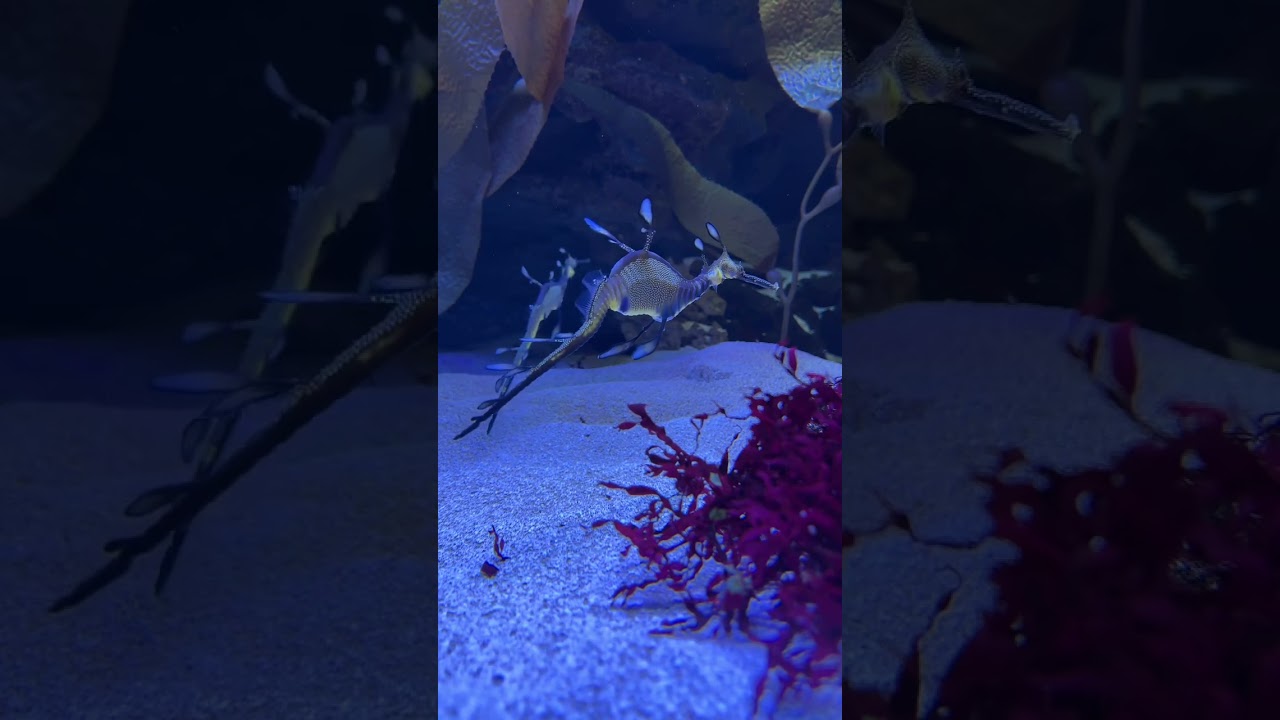- Biological Characteristics and Behavior of Weedy Seadragons
- Habitat and Distribution
- Reproduction and Life Cycle
- Conservation Challenges and Efforts
- Role in Ecosystems and Importance for Biodiversity
The Weedy Seadragon (Phyllopteryx taeniolatus) is an extraordinary marine creature known for its intricate camouflage and delicate beauty. A close relative of the seahorse, this species is easily identifiable by its leaf-like appendages and vibrant colors. Despite resembling the environment they inhabit, Weedy Seadragons are not skilled swimmers. Instead, they rely on the sway of the seaweed to navigate through the waters, blending seamlessly with their habitat.
Primarily found along the southern coast of Australia, their range extends from Sydney in New South Wales to Perth in Western Australia. They prefer rocky reefs, seagrass meadows, and kelp-covered areas where their camouflage provides protection from predators.
Biological Characteristics and Behavior
Weedy Seadragons are fascinating for their complex anatomy and adaptations. Growing up to 45 centimeters, they possess elongated bodies covered with bony plates. These structures lend them a distinct appearance, contributing to their effective disguise among marine vegetation. With small, transparent fins, they flutter gently, using precision rather than speed for movement.
Their diet mainly comprises mysid shrimp and other small crustaceans, which they capture using their narrow snouts. The Weedy Seadragon’s feeding strategy relies heavily on stealth, as their slender appendages allow them to approach prey unnoticed. Despite their fragile look, they exhibit an impressive level of adaptability in their coastal ecosystems.
Habitat and Distribution
The Weedy Seadragon’s preferred habitats are rich in biodiversity, offering an abundance of food and ample space for concealment. These environments are essential not only for their survival but also for the many other species that share the ecosystem. The seadragons’ range is restricted to temperate waters, where sea temperatures and available resources are most suitable for their sustenance.
Conservation programs often conduct surveys in these areas to monitor Weedy Seadragon populations. These studies are crucial for understanding their distribution patterns and assessing any potential threats these creatures might face. Being endemic to a specific region highlights the importance of localized conservation efforts.
Reproduction and Life Cycle
Weedy Seadragons exhibit a unique reproductive strategy, where the males play a significant role in brooding. During the warmer months, males develop a specialized brood patch on their tails. Females deposit eggs there, which the males then fertilize. The eggs remain attached to the male’s tail until hatching, providing them with protection.
This form of reproduction ensures higher survival rates among the young. However, this also means that the species’ breeding success is closely tied to environmental conditions. Factors such as water temperature and habitat stability are critical, affecting not only egg incubation periods but also the overall reproductive success.
Conservation Challenges and Efforts
Like many marine species, Weedy Seadragons face a range of challenges, primarily due to human activity. Habitat loss from coastal development, pollution, and climate change poses significant threats. Changes in sea temperatures can disrupt their reproductive patterns, while pollution degrades their habitats.
Conservation efforts for Weedy Seadragons include habitat preservation and the establishment of marine protected areas. Public awareness campaigns are also vital, as they inform and engage local communities in conservation activities. Research initiatives focus on understanding the ecological role of Weedy Seadragons, bolstering efforts to protect them and their habitats.
Role in Ecosystems and Importance for Biodiversity
Weedy Seadragons contribute significantly to the marine ecosystems they inhabit. As predators of small crustaceans and other tiny marine organisms, they help regulate the population dynamics within their environments. This ecological role underscores their importance in maintaining the balance of marine life.
Their presence is also an indicator of ecosystem health. Healthy populations suggest robust and diverse marine habitats. Protecting Weedy Seadragons is not just about conserving a single species; it reflects a commitment to preserving the intricate web of life that sustains marine biodiversity.
Overall, the Weedy Seadragon is a captivating species whose survival depends on our ability to protect and sustain their natural habitats. Efforts to conserve them reflect a broader commitment to marine conservation, emphasizing the need to preserve the delicate balance of life in our oceans. By understanding and supporting their unique role in the ecosystem, we ensure that future generations can continue to marvel at this remarkable species.
*****
Source Description
Weedy sea dragons use tiny fins to slowly propel, steer and turn, but they mostly drift in the water’s current 🌊🐉. This makes them look like floating seaweed to predators.


